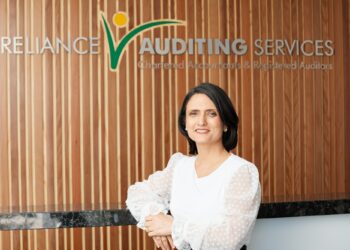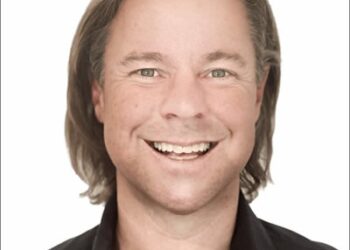The Applicant’s failure here mainly revolved around a theme of a lack of required evidence before the Tribunal, and the Applicant seemed to not fully understand his group structure that he relied on for the proceedings.
A key set of missing evidence being written directions by the Applicant’s “Family Trust 2” to each of its bare trustee companies to enter into certain transactions that could not be entered into by a bare trustee without being directed to do so by Family Trust 2 as the bare trust beneficial owner.
Introduction
This is a long and complicated decision by the Tribunal, which stated:
11. There is a lot of material before the Tribunal. There are two sets of T documents (one for SBXB and the other for YSPQ), four volumes of Supplementary T Documents, Further Supplementary T Documents, Second Further Supplementary T Documents, material handed up and further material in the Tribunal Book. The Individual, his wife, two of his sons, and a business colleague, Mr P, gave evidence. The Individual provided three witness statements…
139. Close to ten years has passed without this situation being rectified. It is hard to understand why the Applicants’ advisers would not have lodged the returns for the Relevant Years in the ordinary manner. It is equally hard to understand why close to ten years would pass without the Commissioner taking further action to have returns lodged by the Trust.
The Applicant’s individual tax returns for the relevant years showed $0, $1, $2 or $3 of income in those years. He filed his tax returns late because he believed he was not required to file those tax returns for having no income.
The Commissioner suspected the Applicant’s lifestyle did not match a claim of low or no income. A comprehensive risk review into the Applicant was commenced by the Commissioner on or around 22 May 2015 and he was subject to an income tax audit commenced on 14 June 2016. The Commissioner’s investigation lasted for several years.
The Commissioner eventually issued amended income tax assessments being default assessments against the Applicant on the basis that the Applicant derived ordinary income pursuant to section 6–5 of the ITAA 1997 or personal services income (through income of YSPQ or Family Trust 2) under in Division 84 and Subdivision 86-A of the ITAA 1997.
Among a number of other claims by the Applicant in objecting to the amended assessments and penalties was that much of the income in question was obtained by himself or by YSPQ each as bare trustee for Family Trust 2 so that money was never his or YSPQ’s but was owned by Family Trust 2 to be offset against losses held by Family Trust 2.
The Tribunal accepted that the issue of availability of tax losses in Family Trust 2 was put at direct issue late and so no findings were made in relation to tax losses, only comments, but this did not affect the bare trust findings.
Counsel for the Commissioner questioned why the bare trust deeds had not been provided to the Commissioner throughout the years of investigation. The Applicant claimed he was not sure whether the bare trust deeds had been provided to the Commissioner previously. But it was not necessary to proceed on this point in further detail.
Any idea of a challenge to the bare trusts as a sham was noted but not proceeded on. Instead of claiming to invalidate the bare trusts altogether, the Tribunal noted the Commissioner to be making the argument that in relation to the relevant payments the purported bare trustee companies were not acting as bare trustees but were acting in their own capacity outright.
Purported Bare Trust Structure
The Applicant was the sole director and sole shareholder of YSPQ, a company which obtained the consultancy fees under scrutiny here from two companies called A Ltd and S Ltd.
The Applicant was the sole director of BN Ltd (him and his wife were the shareholders) which acted as trustee of the relevant discretionary trust labelled as “Family Trust 2”.
The Applicant was a director of each of S Ltd and A Ltd. BN Ltd was a shareholder of S Pty Ltd.
Another company, TB Ltd, owned a farm used by the Applicant (Farm) and is claimed to own the farm as bare trustee for Family Trust 2. TB Ltd and Family Trust 2 were shareholders of A Ltd.
The Applicant was a director of another company, Stock Ltd, which was said to hold all the stock for the Farm on bare trust for Family Trust 2.
The Claimed Bare Trust Deeds
The Applicant relied upon three bare trust deeds, all dated 8 October 2008, where the Family Trust 2 was the beneficiary and YSPQ, TB Ltd and Stock Ltd were the bare trustees for Family Trust 2 as absolute beneficiary.
The Applicant claimed that the bare trusts had existed for about 8 years prior to the the bare trust deeds’ signing dates of 8 October 2008. He said drafting the confirmatory bare trust deeds was to formalise arrangements that had always existed. He said the formalisation was around the time that A Ltd was formed and everything was done at once, but he could not recall this specifically.
In the Tribunal’s decision it was not the retrospectivity of the bare trust arrangements that necessarily invalidated them, but this was a factor impacting the weight to be given to the bare trust deeds. It was a range of other factors that brought down the bare trust arrangements in this case, particularly the lack of evidence of the bare trustees acting on the written direction of the beneficial owner Family Trust 2.
Among other claims made by the Applicant, he also sought that the bare trust arrangements established that consulting income of YSPQ was not his ordinary income (that should have been in his tax returns) but rather were received by YSPQ as bare trustee for Family Trust 2.
The Applicant however was unable to recall the advice provided to him in establishing the bare trust structure other than that it was potentially related to succession planning (and not consulting arrangements). The Tribunal accepted that the Applicant could not explain the bare trust structure as it was established some time ago and there may be a lack of memory.
The Tribunal went on to note that the Applicant was an experienced director of several companies and that he could not excuse his taxation circumstances by blaming his advisers if the structure he sought to rely on ultimately failed before the Tribunal, which it did.
The Tribunal noted that the Applicant had a responsibility to understand and question advice he is given as to his own wealth protection structure and the motivations behind it and that he remained responsible for his tax affairs and he could not shift blame or ask his advisers to explain on his behalf his purported group structure that he should have understood himself.
Bare Trust Deeds Ineffective
The Tribunal found that the three deeds of bare trust were each validly executed and that they were not created just for the purpose of the Tribunal proceedings and there was no evidence that they were dated retrospectively rather than dated on the date when they were actually signed.
Relevantly, the Tribunal referred to Herdegen v Federal Commissioner of Taxation 88 ATC 4,995 where the Federal Court referred to characteristics of a bare trust, “[A]at 5,003 Gummow J said:
Today the usually accepted meaning of “bare” trust is a trust under which the trustee or trustees hold property without any interest therein, other than that existing by reason of the office and the legal title as trustee, and without any duty or further duty to perform. except to convey it upon demand to the beneficiary or beneficiaries or as directed by them. …. The beneficiary may of course hold the equitable interest upon a sub-trust for others or himself and others: sec Halsbury’s Laws of’ England 4th ed .Vol. 48, “Trusts”, para. 938. The term is usually used in relation to trusts created by express declaration. But it has been said that the assignor under an agreement for value for assignment of so-called “future” property becomes. on acquisition of the title to the property. trustee of that property for the assignee (Palette Shoes Pty. Ltd. v. Krohn (1937) 58 CLR 1 at p.27) and this trust would answer the description of a bare trust. Also, the term “bare trust” may be used fairly to describe the position occupied by a person holding the title to property under a resulting trust flowing from the provision by the beneficiary of the purchase money for the property (Emphasis [retained from Tribunal Decision with underline added).
The Tribunal noted that Stock Ltd sold its animal stock assets, TB Ltd entered into lease agreements/agistment agreements in relation to the Farm, and sold a portion of the Farm, and YSPQ transferred vehicle assets to the Applicant, and then the Applicant transferred some of those vehicles to third parties. YSPQ also entered into contractual arrangements such as the Consultancy Agreements with A Ltd and S Ltd. These actions could not generally be carried out by a bare trustee without being directed to do so by the beneficial owner under the bare trust deed, being Family Trust 2.
As typical, the bare trust deeds included clauses requiring the bare trustee to
(a) deal with assets, and incur liabilities only as instructed by the [beneficial owner]; and
(b) act promptly in relation to instructions from the [beneficial owner]; …
But there was no indication that the bare trust deeds did not expressly state the assets which were held on each bare trust.
There was no evidence that BN Ltd as trustee of Family Trust 2 as bare trust beneficiary directed for any of those transactions to occur. It is a hallmark of a bare trust arrangement that the bare trustee only act on the directions of the beneficiary. Here, there were no resolutions or written directions signed under the resolutions to provide such evidence.
Without such written directions or resolutions to clarify that they were acting on the directions of Family Trust 2, the purported bare trustees YSPQ, TB Ltd and Stock Ltd exercised more discretion and decision making than is consistent with bare trustee status. For that reason, the Tribunal was not satisfied that the bare trust deeds, while validly executed, were effective to create any purported bare trusts.
Purchaser Deeds, Declaration of Trust did not apply
This left the issue separate to the consulting fee payments to YSPQ, which were paid also directly to the Applicant, which he claimed to be reimbursements of expenses or repayments of loans or paid to him as a bare trustee for Family Trust 2, similar to his argument about YSPQ acting as bare trustee, but without having signed bare trust deeds.
As a separate but related argument, the Applicant claimed that YSPQ was paid the consulting income and that he himself only received payments as bare trustee for Family Trust 2.
However there was a set of two consulting agreements, one set for S Ltd and one set for A Ltd, where a set included an agreement each with one naming YSPQ as consultant and the other naming the Applicant as consultant.
The Tribunal therefore was not satisfied that the Applicant was not directly engaged by A Ltd and S Ltd. The Applicant also claimed that bank information about payments to himself were not valid and should be ignored, which was rejected by the Tribunal.
The Applicant sought to rely on apparent purchaser deeds and a declaration of trust to suggest a bare trust relationship. The apparent purchaser deeds related to properties that are unrelated to the Farm. The consulting agreements were in relation to the Farm.
Similarly, the Tribunal accepted the Applicant acted as bare trustee under the apparent purchaser Deeds and the declaration of trust. However, those documents could apply only for the purpose of the specified properties. The Tribunal did not accept that the Applicant acted as bare trustee for Family Trust 2 beyond that, and therefore not in relation to consulting fee payments (that were also found to not all be reimbursements or repayments and therefore ordinary income).
This means that the Applicants’ argument that YSPQ or Family Trust 2 derived fees under the consultancy agreements was also not accepted by the Tribunal leading to those fees being part of the Applicant’s ordinary income.
Vehicles
The Applicant also claimed that a set of vehicles were actually held by him as bare trustee due to an ownership requirement in relation to security over personal property. This was also rejected by the Tribunal which stated that the Applicant used the vehicles and there was again no written direction to the Applicant from Family Trust 2 as to dealing with the vehicles on bare trust for Family Trust 2.
Personal Services Income
To limit an otherwise broad discussion, this article will only consider the relevant parts of the Tribunal’s decision in relation to bare trusts, and not cover the personal services business or anti-avoidance components.
The Tribunal stated that due to its other holdings in its decision, Part IVA of the ITAA 36 (general anti-avoidance) need not be considered. As an aside, some points from the Tribunal on personal services income are as follows.
Even if the Applicant was not directly engaged as consultant (which was rejected as noted above), he could have personal services income imputed to his ordinary income through an interposed entity under section 6-5(2) of the ITAA 97.
Section 86-15(3) of the ITAA 97 provides that if the payments from S Ltd and A Ltd are derived by Family Trust 2, if Family Trust 2 is itself conducting a personal services business, then the payments are not personal services income of the Applicant.
But the Applicant accepted that 80% or more of the personal services income (claimed to be to YSPQ as bare trustee for Family Trust 2) was from A Ltd (i.e. only one client). Therefore neither Family Trust 2 and/or YSPQ could be a personal services business, and even if the bare trust deeds were held to validly apply, which they did not, the consulting income would be imputed to the Applicant’s ordinary income as personal services income.
Take away points
A typical example of bare trust use for SMSFs is the limited recourse borrowing arrangement, which generally includes a separate notice of direction to the bare trustee to enter into the acquisition of the bare trust asset on behalf of the SMSF trustee. Also required would be a direction to the bare trustee to transfer the asset back to the SMSF trustee upon winding up of the limited recourse borrowing arrangement.
However this decision may prompt advisers to include a direction from the SMSF trustee to the bare trustee for all other acts of the bare trustee such as entering into a lease (generally included as an ancillary task under the notice of directions to acquire the asset) and obtaining consulting fees.
Here, the structure was complicated and not fully understood by the ultimate owner. But it is an example that having a bare trust deed, especially one that is confirmatory, will not necessarily be invalid, but the bare trust deed has to be followed in the actual dealings of the bare trustee in order to not be acting in its own capacity outright or invalidating the bare trusts altogether.


